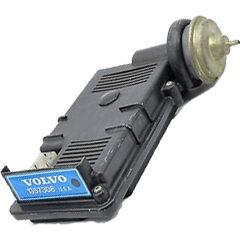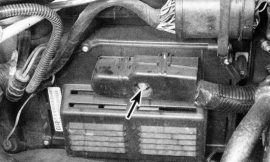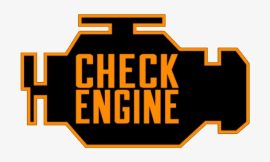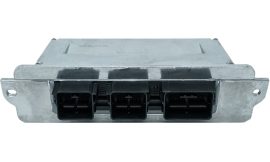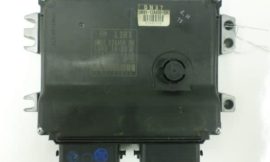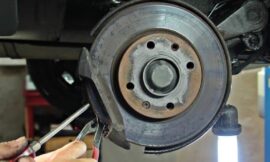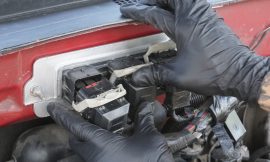Last updated on April 7th, 2022 at 06:22 pm
The modern ignition coils are combined together in a molding to operate inside a single block. The design allow for each cylinder to have its own ignition tower but share coil with nearby cylinders. Without a proper functional coil pack, your ignition system will fail to start the car. In as much as a typical vehicle may have many vital components, the coil pack remains an important aspect of starting your car engine.
Follow these few steps to test an ignition coil pack, in order to determine if your vehicle’s problem is coming from your ignition pack or your ignition control module.
- Visual inspection
Some cases of bad ignition pack are detectable by looking at the coils. You will not fail to spot cracks, carbon tracking, and burn marks.
- Swap a suspect ignition coil to a different cylinder
A car using ignition packs means you can transfer the suspect coils to a different cylinder and test for misfire. For best results, use a scan tool or a code reader.
If you cannot get hold of a scanner to test your ignition coils or code reader, perform a power balance test to eliminate each cylinder. A balance test involves listening to a drop in RPMSs and a cylinder with no change is the culprit and has no effect on the vehicle’s RPM.
To rule out the possibility of the drop in RPM being caused by fuel delivery or mechanical problems, swap the coil to another cylinder and repeat the power balance test. If the loss still shows, eliminate the coil.
- Spark tester
A test for the ignition coil pack is possible using a spark tester tool that you have to install it in line with the ignition coil pack. It is always a good idea to get a flexible and an affordable tester to get the right results. A quality coil spark tester requires so many volts to fire, which is why any other approach to testing ignition coil pack may not give accurate results.
The decision to use the spark tester depends on the type of ignition and the tool you are using. It is a good idea to take out the suspect spark plug and test from outside the vehicle because it requires less voltage to fire a spark through it. When the engine is running with the spark plug connected, you get a spark that is inadequate to jump the plug gap while the engine is running.
- Using a coil-on-plug (COP) probe
A COP is a tool that uses magnetic induction to confirm if the coil is firing. You can go with a COP probe that displays data on the screen or that flashes light to indicate the coil is in a working condition.
Follow the manufacturer’s instructions on its use and setup. Place one side of the tool over the coil and the case of a flashing probe, the tool illuminates.
- Checking resistance
Ignition coil pack resistance checking is a popular approach because you will need a digital multimeter to confirm the coils resistance readings (in ohms). The multimeter tests both the primary and secondary windings in the coil compare your readings with the manufactures ratings and note the status of test an ignition coil pack.
Some testers are out of favor with resistance testing because of inconclusive results. A coil pack resistance testing does not take place in the coils ideal condition of hot temperature or under any load, bad coils may also pass such a test.
- Monitor ignition patterns
Using an oscilloscope offer the best diagnosis for an ignition system‘s bad coil pack. The tool displays a wave pattern of the signals coming from the ignition system voltage signals against time. The only difficulty may be using the device and its cost.
What happens if you fail to replace bad ignition
Fixing any problem that can affect an ignition coil pack ,the coil pack inside your vehicle’s ignition system should be a priority. Otherwise other parts of your vehicle such the catalytic converter, decline in engine performance, and making the car hard to control at high speeds.
The check engine light will always be on because the bad coil trips the electronic system to detect as an issue with the engine oil or circuit. Your car may fail to start and this is common with cars that use a single ignition coil to power all cylinders.
Replace ignition coil
A replacement coil should be similar to what your vehicle is using. You only go for a different type in terms of performance if it is a matter of upgrading the whole ignition test pack. Before replacing, ensure the contacts are clean and are not corroded as this makes complete contact with electrical contacts.
You are advised to apply grease to coil connectors to minimize the risk of spark flashover due to accumulated moisture.
In a case of repeat coil, failures could be because of being overworked due to high-level resistance caused formation of gaps between spark plugs. Some cases of continuous coil pack failures are due to lean fuel caused by vacuum leak, dirty injections, or EGR valve leaks.
Engines that have a higher mileage and use COP ignitions should have new plugs if one coil has failed. Replacing all of them makes sense if the original plugs have more than 45,000 miles. Indium or long-life platinum plugs with more than 100,000 miles on them.
Several ways exist within which you can use to tell a bad coil pack. When you start experiencing rough idle, a noticeable loud engine, your car engine will start losing power, reduced RPMs for no good reason, the check engine dashboard light will give a warning, and an active warning on gas even when there is plenty in the tank.
Connect the multimeter to either the terminator pin or its positive terminal and the high output terminal that connects the spark plugs. Refer to the manufacturer’s specifications for the correct range of specifications.
Try interchanging the spark plugs and see which one does not create a spark because that is the bad one.
Remove one spark plug using the correct spark plug socket. Hold the removed socket with an insulated pliers and insert it into the coil wire, the exposed end of the plug should be held against an exposed metal to serve as the ground. Let another person start the car. If you do not see any spark, then that is the bad plug.



